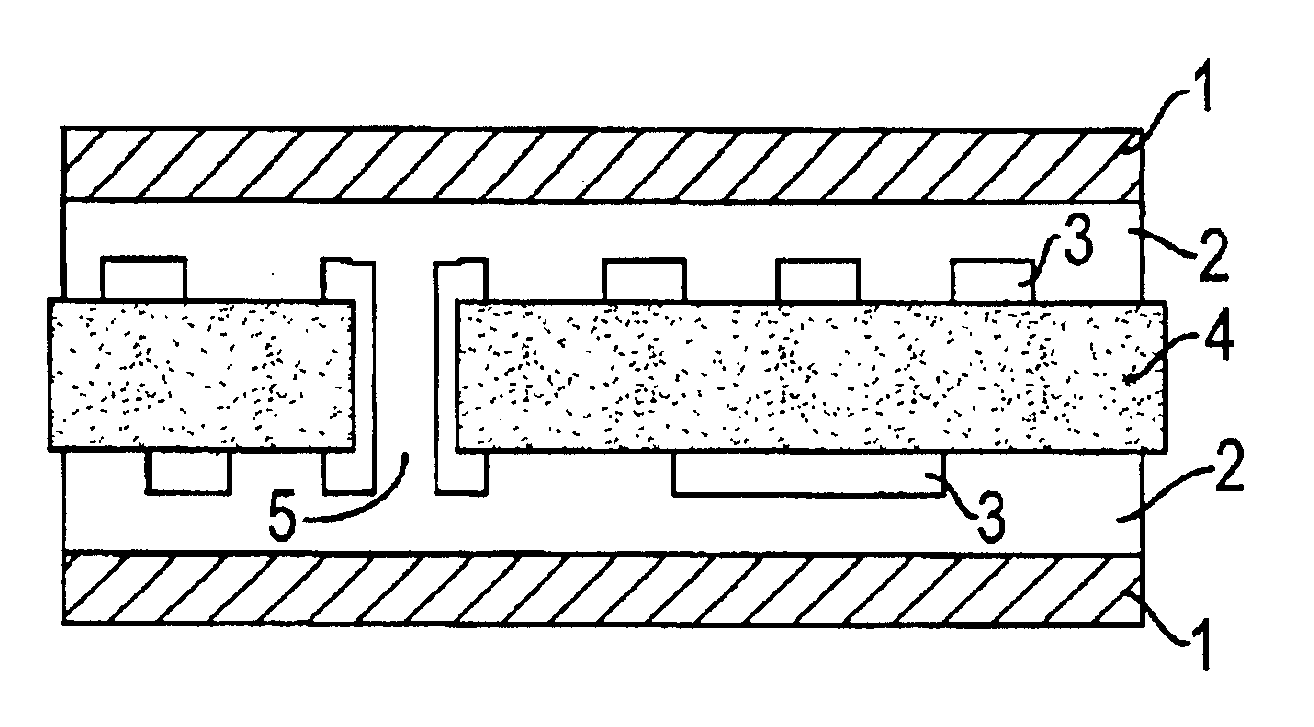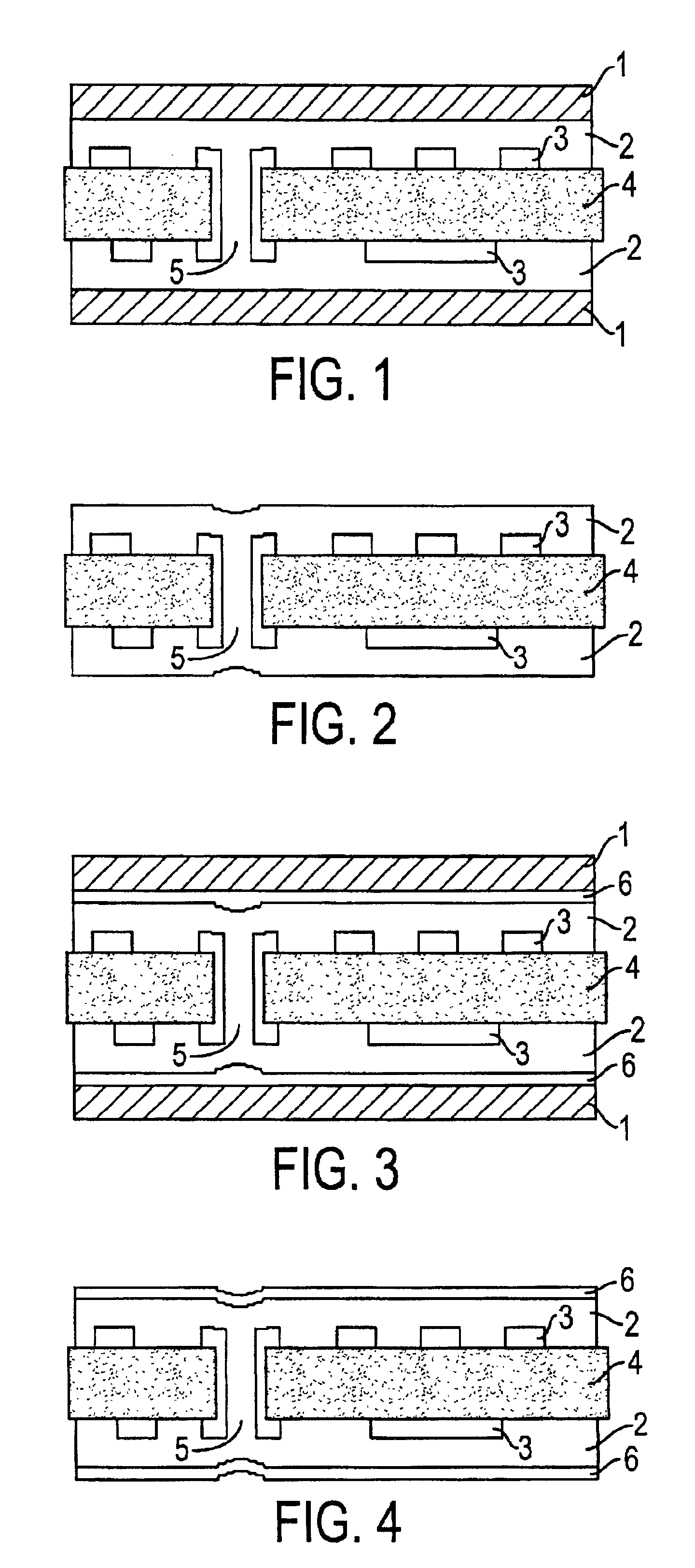Process for producing a multi-layer printer wiring board
- Summary
- Abstract
- Description
- Claims
- Application Information
AI Technical Summary
Benefits of technology
Problems solved by technology
Method used
Image
Examples
example 1
[0057]Thirty parts by weight of a fluid bisphenol A epoxy resin (with an epoxy equivalent of 185, Epicoat 828 EL manufactured by Oil Shell Epoxy, Co., Ltd.) As the component A (the amount to be blended is hereinafter represented in parts by weight), 20 parts by weight of a bisphenol A epoxy resin (with an epoxy equivalent of 2000 and a softening point of 124° C., Epicion 7051 manufactured by Dai-Nippon Ink Chemistry, Co., Ltd.) as the component B, and 40 parts by weight of a brominated bisphenol A epoxy resin (with an epoxy equivalent of 499, a softening point of 75° C. and a bromide content of 21% by weight, YDB-500 manufactured by Toto Chemical Industry, Co., Ltd.) were dissolved in methyl ethyl ketone (abbreviated as MEK hereinafter) under heating and agitation, to which were added epoxy curing agents as the component (C), namely 4 parts by weight of 2,4-diamino-6-(2-methyl-1-imidazolylethyl)-1,3,5-triazine isocyanuric acid adduct, 2 parts by weight of finely ground silica and 4 ...
example 2
[0058]Twenty parts by weight of a fluid bisphenol A epoxy resin (Epicoat 828 EL manufactured by Oil Shell Epoxy, Co., Ltd.) as the component A, 20 parts by weight of a brominated bisphenol A epoxy resin (YDB-500, manufactured by Toto Chemical Industry, Co., Ltd.) And 20 parts by weight of cresol novolak epoxy resin (with an epoxy equivalent of 215 and a softening point of 78° C.; Epiclon N-673, manufactured by Dai-Nippon Ink Chemistry, Co., Ltd) as the component B′, and 15 parts by weight of a polybutadiene rubber with its terminus epoxylated (Denalex R-45EPT, manufactured by Nagase Chemical Industry, Co., Ltd.) were dissolved in MEK under heating and agitation, to which were added 50 parts by weight of a brominated phenoxy resin varnish (at a non-volatile content of 40% by weight and a bromide content of 25% by weight in a solvent composition of xylene: methoxypropanol: methyl ethyl keton=5:2:8, YPB-40-PXM40, manufactured by Toto Chemical Industry, Co., Ltd.) as the component (D), ...
example 3
[0059]The resin composition varnish as described in Example 2 was coated on a PET film of a thickness of 50 μm to a final dried thickness of 100 μm by means of a roller coater, followed by drying at 80 to 120° C. for 13 minutes to prepare an adhesive film (at a content of the residual solvents at 4% by weight). The film was folded at an angle of 180 degrees so as to access the flexibility, and no abnormalities such as cracks were found in the resin part.
PUM
| Property | Measurement | Unit |
|---|---|---|
| Temperature | aaaaa | aaaaa |
| Percent by mass | aaaaa | aaaaa |
| Percent by mass | aaaaa | aaaaa |
Abstract
Description
Claims
Application Information
 Login to View More
Login to View More - R&D
- Intellectual Property
- Life Sciences
- Materials
- Tech Scout
- Unparalleled Data Quality
- Higher Quality Content
- 60% Fewer Hallucinations
Browse by: Latest US Patents, China's latest patents, Technical Efficacy Thesaurus, Application Domain, Technology Topic, Popular Technical Reports.
© 2025 PatSnap. All rights reserved.Legal|Privacy policy|Modern Slavery Act Transparency Statement|Sitemap|About US| Contact US: help@patsnap.com


